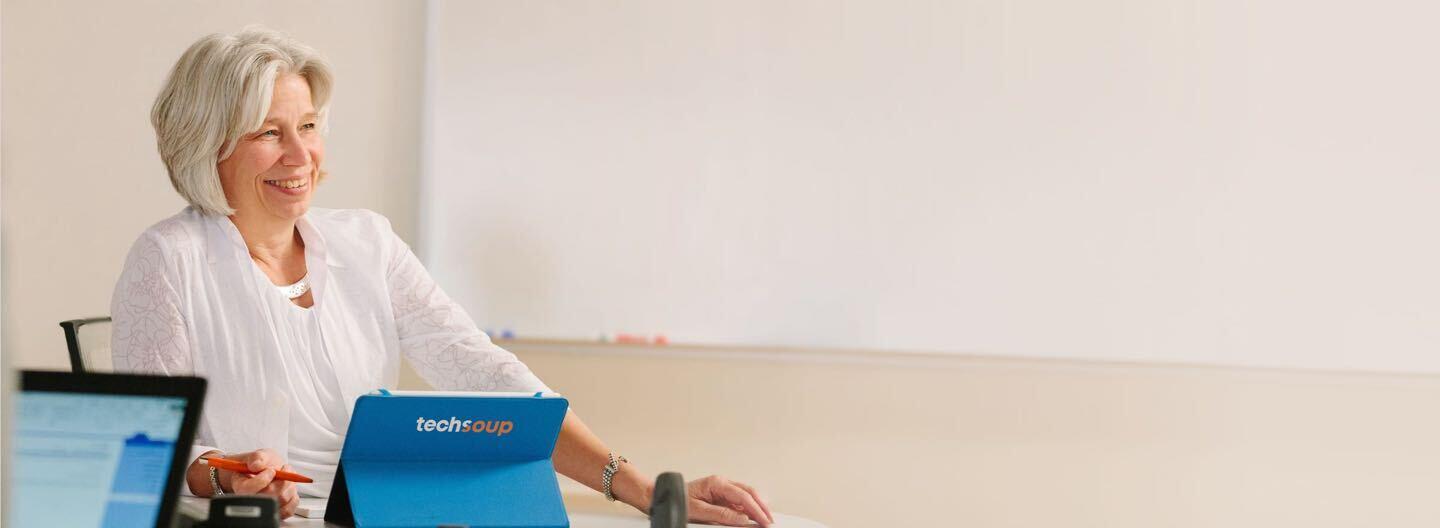This blog post is more than five years old. It may contain outdated information or refer to products that are no longer available.
Recently, I've been sharing some of our plans to invest the funds raised through TechSoup's Growth Capital Campaign. So far, I've written about our strategies to facilitate the development of more apps for good, to build a new NGO marketplace, and to expand on our global data and validation services.
Today, I'm going to share the underpinning of these services: the Cooperative Technology Platform (CTP).

The TechSoup you know today is powered by systems that were acquired, built, and refined over 32 years. The result? We have robust and secure systems, but they are unwieldy, hard to scale, and more expensive than they need to be. But most importantly, they don't allow us to fully realize the vision that I've shared in the blog posts I mentioned above.
In short, the platform we have maximizes our ability to manage transactions — the one-to-one interactions that allow us to validate your nonprofit and ensure that you get the product, the courses, the funding that you need. That's great. But it's not enough.
We want to build both an innovation and a transaction platform for civil society. This will be a hub for data sharing, data aggregation, and collaboration. This will also be a platform where developers can build software tools that can aid organizations in their missions to make the world a better place. And of course, this will power the marketplace for civil society efforts across the planet.
What Is the CTP and How Does It Work?
In order to better understand the CTP, let's take a closer look at two basic platform types I just mentioned: innovation platforms and transaction platforms.
Innovation platforms serve as technological foundations upon which people can develop innovations. These include things like Apple iOS, Microsoft Azure, and Amazon Web Services. Transaction platforms, on the other hand, include those used by companies like Airbnb, Uber, and the Amazon Marketplace. These all serve as intermediaries for the direct exchange of goods and services.
The CTP is a hybrid of these two types of platforms that's been envisioned by the leadership at TechSoup and is being developed by our teams in San Francisco, California; Corinth, Mississippi; London, U.K; Raleigh, North Carolina; and Warsaw, Poland.
At its core is a massive dataset of over one million NGOs operating in 236 countries and territories around the world. Built on the Common Data Model (CDM), the CTP will foster a never-before-seen aggregation of civil society data that will be used to create a rich app-building environment. From there, developers can plug into our vast set of resources to develop software and apps for good — in some cases using low-code tools — that can be used to solve pressing issues facing civil society around the world. That's the innovation platform.
But all of this will also help scale our ability to perform validation services, execute eligibility matching, complete e-commerce transactions, process payments, manage our catalog of offers, produce online content, and deliver other services. That's the transaction platform the CTP will deliver in the form of a more robust and more dynamic marketplace and skills learning center for NGOs around the world.
But it's important to understand that the CTP is not just a set of technologies — pieces of code that are strung together. It's also (like all technology) a philosophy of how communities can work together to achieve common goals.
Philosophy? I Thought You Were Writing About Technology
Bear with me.
At TechSoup, we believe that
- Civil society needs leading-edge infrastructure to take on the big challenges outlined in the UN Sustainable Development goals. Whether it's ending poverty or improving health and education, infrastructure is the foundation for building global partnerships to address these challenges.
- We must all maximize individual choices over "one-ring-to-rule-them-all" strategies. With the multitude of global challenges comes a multitude of ways to address them. When respecting diversity of thought and actions, we enable more creative possibilities we wouldn't have been able to with a more linear approach.
- Civil society needs to accumulate and aggregate our own meaningful data across geographies. We must do this so that we can counter data by governments and businesses in order to provide a more accurate and holistic picture of the communities in which we live.
- Everyone, everywhere should be able to access, use, and receive the services available on TechSoup's platform. Regardless of age, nationality, or political belief, this means providing the right tools — such as Internet connectivity, hardware, software, or training — to enable changemakers creating a more equitable planet.
Remember the example I gave in the validation and data services post, in which an NGO wants to make a Microsoft PowerApp available to other organizations around the world? That's an example of ensuring that everyone should be able to use and receive the benefits of the platform.
The work that we do to constantly bring new products onto the platform? This emphasizes choice. Because it really is your choice when it comes to the technology you implement. And we want to make sure you have as much information and as many options as possible.
Or take Tarjimly, the app I mentioned in my apps for good post that connects displaced populations with free translation services. Data gathered from this software can help us get a clearer picture of where displaced populations are in the world and what their realistic needs might be.
Throughout our organizational life, we find examples of the beliefs listed above. In fact, many of these same principles governed the way we founded and grew the TechSoup Global Network. We concentrated on partnering with local organizations to build technology capacity, to share unrestricted income, and to receive a broad diversity of viewpoints on the way these organizations can benefit the most from these resources.
In fact, the DPO in our Growth Capital Campaign is an example. It was created so that people could receive the benefits of investing in TechSoup and the future of civil society for as low as $50. Democratizing resources and making the benefits available to as many people and organizations as possible is woven throughout the fabric of our organization, including the way we raise capital.
We want the CTP to be the technological manifestation of those same ideas.
How Is TechSoup Building This Philosophy into the CTP?
We are emphasizing technology that guides the way that people and systems can interact with the CTP, without assuming too much of what any one person might want to do with the platform and the benefits and services it provides. To that end, we'll be relying on our CDM, along with APIs for integration, to access and centralize services.
Additionally, when we see actions that are happening over and over again, we'll take that as a learning opportunity to improve and build those out as services. We've already done this by building a service to validate organizations to make it easy for corporations and foundations to connect their in-kind donations and grantmaking with eligible nonprofits.
In some cases — like the marketplace — we may choose to build systems ourselves because they are so core to the work that we do. In other cases, such as the platform that runs TechSoup Courses, we'll continue to use a third-party vendor (in this case, TechChange). In both instances, we want the data produced via these systems to be aggregated in ways that can drive decision-making for us and for the people who are participating in the Cooperative Technology Platform.
When Will Development of the CTP Be Complete?
It won't be.
The CTP, if we do it right, will be constantly evolving. It will be evolving as technology evolves. It will be evolving as new and recurrent needs are surfaced and as we build out new services — as a community.
It's our job to build it as the innovation platform so that it can adapt to changing circumstances. So that we can respond to big issues that will change the shape of civil society, issues like closing spaces and climate change.
How Will This Benefit Civil Society at Large?
It is our goal that this platform powers the TechSoup you know and its logical extensions — the ability of a niche developer to make their products available to select types of organizations. Even more though, it is our goal to build an infrastructure that can be used by civil society broadly to share resources, to access valuable services, and — most importantly — to build a community of committed change agents in all sectors.
This infrastructure isn't a pipe dream. We are almost there. We need your help to get it done.
This is one part of a series of posts describing the investments we are making with our Growth Capital Campaign. Read the other parts:







